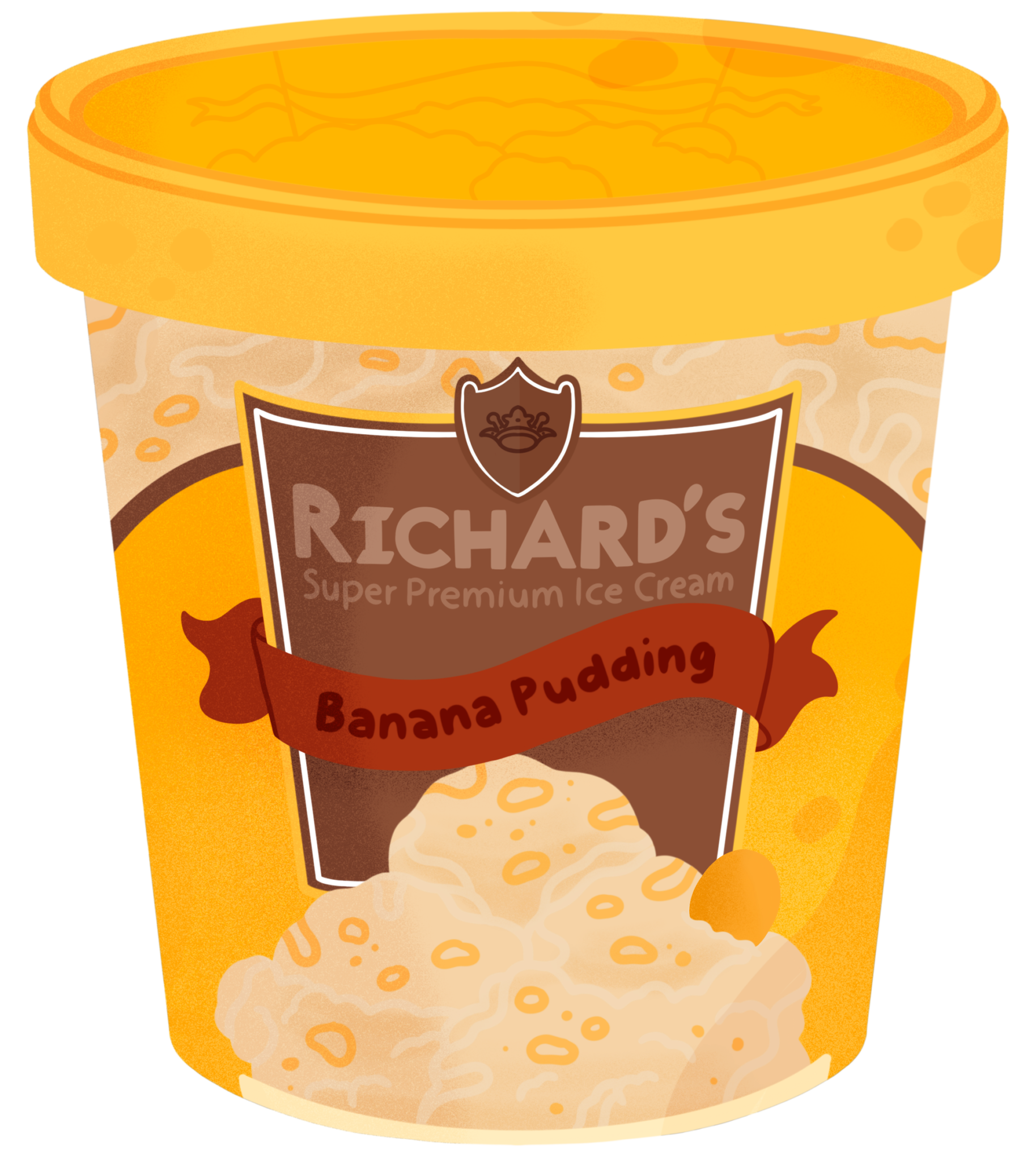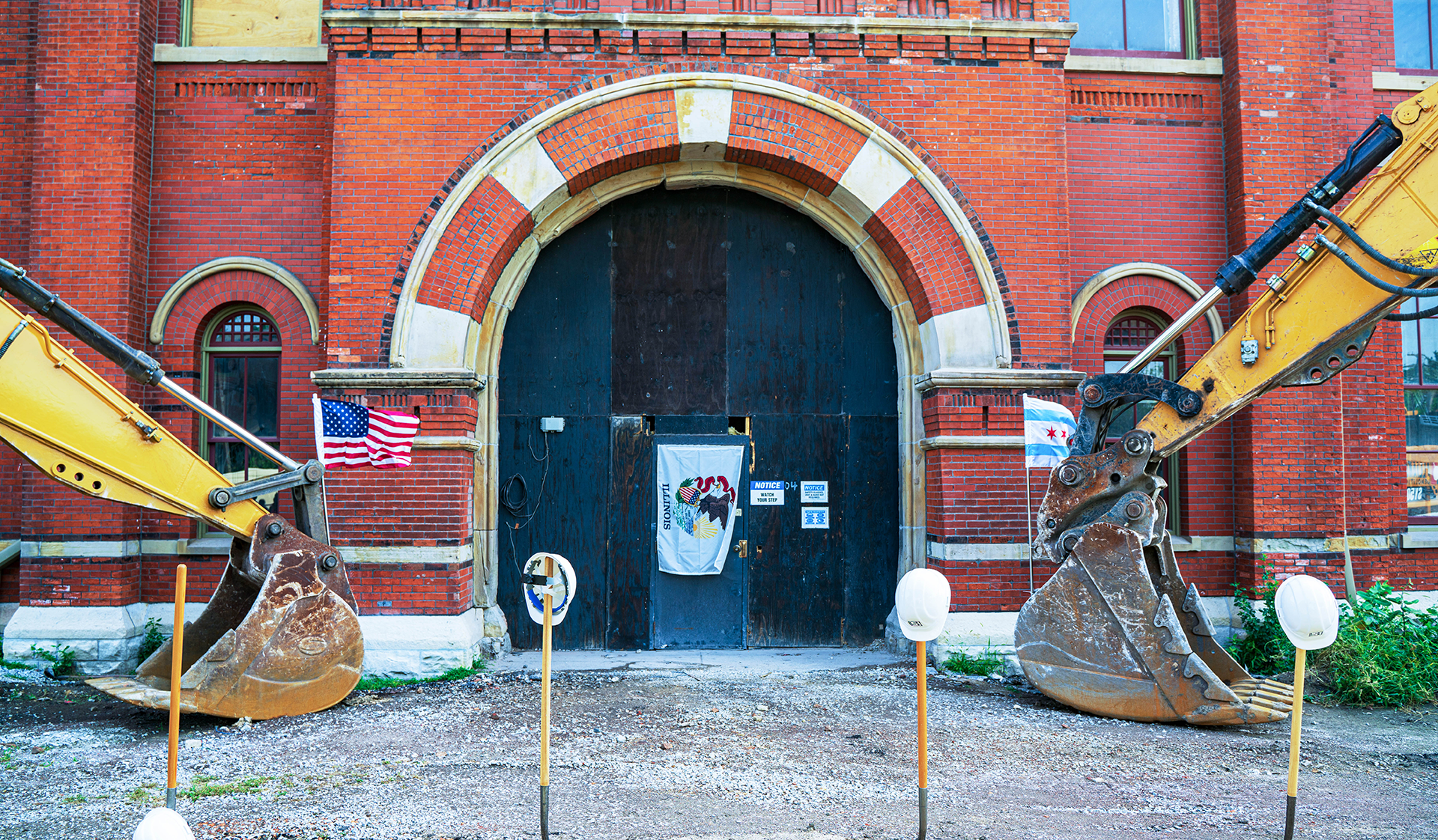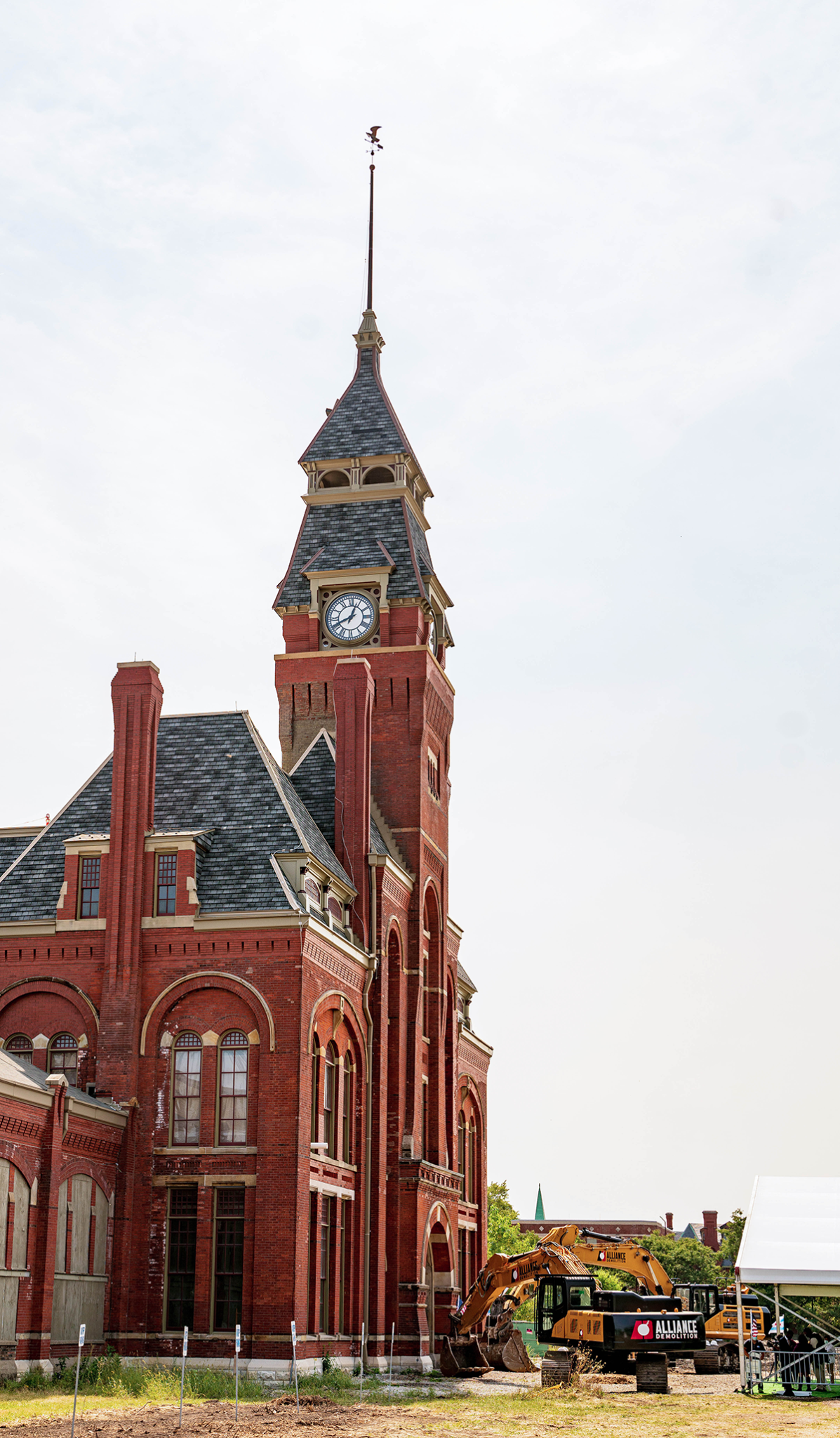Pullman is a neighborhood undergoing a transformation. What began as an acclaimed planned town built by George Pullman has become an acclaimed model for redevelopment for other neighborhoods. Pullman was praised for establishing a vertically integrated town where many of his workers, who doubled as residents, were in want of nothing. For more than a decade, they weren’t, but changes in the U.S. economy that took place during the Gilded Age brought infamy and a watershed moment in American and labor history: the 1893 Pullman Railway Strike.
What followed were a series of antitrust measures that separated Pullman’s railcar operations from its residential holdings. The company managed to operate until it was gradually dissolved by the late 1980s.
Like many neighborhoods in the Far South Side, the closure of Pullman’s famed railcar company coincided with the closure of nearby steel mills and was indicative of a broader industrial breakdown that initiated rapid demographic changes and economic deterioration. That is, until reinvestment was initiated by US Bank and Chicago Neighborhood Initiatives, starting in 2009.
Since this period of reinvestment began, a litany of big brands —a Whole Foods distribution center, a Walmart, and even Wisconsin’s famous Culver’s—have posted up in the iconic neighborhood, causing giddiness among people on the South Side.
There’s even been a move toward green industries with the opening of the Method Soap Factory and its rooftop farm tenant Gotham Greens, the largest rooftop farm in the nation.
The most recent big-name ribbon cutting was for an Amazon Distribution Center; the October 28 ceremony was attended by 9th Ward Alderman Anthony Beale and Mayor Lori Lightfoot.
Though Pullman’s recovery is by no means complete, and we wait to see what these promising changes will bring to the neighborhood over time, it’s worthwhile to look back at just a couple of enterprises whose staying power continues to be a source of pride for residents of this iconic company town and beyond. (Francisco Ramírez Pinedo)
Neighborhood Captain Francisco Ramírez Pinedo is a freelance web developer and contributing editor for the Weekly based in South Chicago covering labor, tech/cybersecurity, politics, immigration, arts, and design.
Best Local Ice Cream, Made With Love
Richard’s Super Premium Ice Cream

Prior to the COVID-19 pandemic, you could order a wide array of items at Richard’s Super Premium Ice Cream. From hot dogs and sandwiches, to sundaes and kernel popcorn that could give Garrett’s a run for their money. However, this Pullman mainstay of over twenty years, as its name suggests, is popular for ice cream.
Housed in an unassuming warehouse across the street from the University of Chicago Press distribution center, one could be forgiven for driving past this factory that houses a neighborhood pillar. Most of the current ice cream selection, just in time for the holidays, is reminiscent of a familial Thanksgiving dinner: Black Walnut, Sweet Potato Pie, Peach Cobbler, Pineapple Vodka (flavored with Ciroc). Its most popular flavor is Banana Pudding, which has real chunks of Nilla wafers, and is proof positive of the care that goes into hand-making these one-of-a-kind sweets.
Due to the pandemic, Richard’s, like every other restaurant in the city, has had to implement stricter rules in dealing with customers. No one is allowed inside, but staff will gladly take your order curbside, maintaining social distancing precautions. As with other restaurants in the city, it has had to lean on delivery service apps like Grubhub and DoorDash to fulfill orders. For pickup, customers are encouraged to call ahead with their order, or place one online through Richard’s website. Since the service that processes their website orders claims to charge no commission for the establishment, it is an attractive option for locally owned establishments that are struggling during this pandemic. Like the many small businesses that are going through the same ordeal, Richard’s Super Premium Ice Cream is definitely worth making an effort for, in the hopes that it makes it through. (Francisco Ramírez Pinedo)
Richard’s Super Premium Ice Cream, 11103 S. Langley Ave. Weekdays, 11am–10pm; Saturday, noon–8pm; Sunday, 11am–9pm. (773) 614-8999. richardsicecream.com
Best Revival of a Labor Strike Tactic
Pullman Visitor’s Center and the NBA Wildcat Strikes

It has been over a hundred years since labor leader Eugene V. Debs, organized a strike against the Pullman Palace Car Company. The workers in the American Railway Union were demanding lower rent in Pullman following layoffs and wage decreases. When the company refused, nearly 4,000 workers refused to run Pullman’s cars. The suddenness and effect of their actions is what is known as a wildcat strike. The storied events that followed are to be showcased in Pullman’s renovated Visitor’s Center in the historic Clock Tower and Administration Building. Long-awaited initial construction began on Labor Day this year; the project is expected to be finished by spring of next year. The historic district of Pullman was designated a national monument, the first in the city, by then-President Barack Obama in 2015.
In 2020, with the upheaval that followed the murders of George Floyd and Breonna Taylor, many Americans began to advocate for Black lives in an unprecedented way—demanding that local governments and corporations do the same. On August 26, following the shooting of Jacob Blake in Kenosha, players for the Milwaukee Bucks followed the model of the Pullman workers before them and refused to play Game 5 of the NBA playoffs against the Orlando Magic. The Magic, as well as other teams, promptly followed suit. It caught many off guard, as is the essence of wildcat strikes (and the big cats from which they take their name). That the strikes were notable is due not only due to the high profile of the NBA, but also to the fact that the league, which is eighty-one percent Black, was one of the most high-profile sports leagues to meld labor with racial equality. Also notable is the huge discrepancy between players in major sports leagues and the majority shareholders, who are overwhelmingly white. Three days after the strikes the NBA and the National Basketball Players Association included voting rights into their labor agreements when they struck a deal that converted team-owned stadiums into voting locations for the 2020 election.
The 1894 disruptions in rail operations had great impact, and eventually drove then-President Grover Cleveland to call in national troops under the pretense of getting the mail delivered on time. By the end of the Pullman strike, some thirty people had perished due to violent clashes with the troops, but the company agreed to curb its power over workers. The strike also demonstrates recurring aspects of the movement for workers’ rights: the protests stoked racial tensions by hiring Black workers as strikebreakers, due to their being shunned by the union; the wage decreases were due to an economic downturn; Debs, a socialist, ran for president from his jail cell. The Pullman strike ultimately inspired the creation of Labor Day. The symbolism of officials breaking ground on this year’s Labor Day and the NBA strike that transpired a month before can’t be denied. Obviously, there are important differences between the Pullman and the NBA strikes, but to see one as having inspired the other is a fitting tribute to this landmark event in the history of the labor movement. (Francisco Ramírez Pinedo)
An exhibit dedicated to the 1894 wildcat strike, as well as the 1937 founding of the Brotherhood of Sleeping Car Porters, will be showcased in the historic Pullman Administration Clock Tower Building, northeast corner of E. 111th St. and S. Cottage Grove Ave., after renovations are complete next year. For more information on the project, visit nps.gov/pull/projectupdates.htm.

